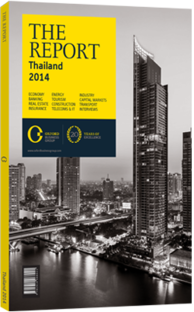Buy in luxury: Change is under way in the high-end shopping segment
Thai retailers are moving up the value chain. What is more, they are already coming from the upper rungs, having more or less always catered to the high end. The country’s premier malls in downtown Bangkok are far more tailored to the rich than malls in the West, or even in Singapore and Hong Kong. Not only do they carry the most expensive global brands; they also have a critical mass in many high-end names found in few other places in the world. The line-up at Siam Paragon, for example, has stores ranging from Tods to Hugo Boss to Bvlgari. One can even buy a Maserati. Some of the world’s most valuable and valued brands are offered in multiple malls around the city: Hogo Boss is in four malls; Christian Dior is in three; Bally is in six; Tumi is in four. And more high-end brands are on the way.
Thailand would like to go a step further. Because of the sheer number of wealthy people there, it currently has luxury on offer; in the future, the country would like to be positively known for it. The objective is to become a destination for people who are in the market for high-end items. Some retailers are aiming to build malls that are known specifically for luxury, both in terms of items sold and atmosphere. The government, too, would like to make the country into a centre for luxury retail. Bangkok is considered the best shopping city in the world after New York City, according to a 2012 survey by Trip Advisor. Now the country wants to revamp its image so as to be known as much for high-end shopping as for discount shopping and bargains.
TAT Campaign
In 2013, the Tourism Authority of Thailand (TAT) launched a new internet portal, Thailand Super Quality, which is designed to guide affluent travellers towards products and services that might be of interest to them. Thailand has a history of success in attracting tourists to the country, and that has helped maintain fast economic growth. Yet, according to the TAT, what matters is not how many but whom: the authority believes tourism revenue can be further boosted by attracting not just more people, but those in particular who tend to spend large sums of money.
A second government-led effort came in September 2013, when the Ministry of Finance pushed to lower the luxury tax from 30% to 5% (with some items coming in at zero). The idea was to help Thailand compete with duty-free ports like Hong Kong and Singapore and put Thailand on the map as a place to buy luxury goods, for both locals and foreigners alike. The cut was to be targeted and not across the board. Watches, clothes and cosmetics were considered most appropriate for the reduction, as electronic products are already subject to low duties and were already cheaper in Thailand than elsewhere.
Later that month, the government backed down.
While no reason was publicly given, analysts suggested a number of reasons. One was growing concern about a “shoppers war” whereby the region’s jurisdictions pile incentive on incentive to attract the wealthy in what was ultimately a zero-sum game. The government said it had “done enough” to draw foreigners.
Another case against the programme was that it was unlikely to succeed in drawing shoppers, as wealthier customers would not come to Thailand just to save a few percentage points off of a big-ticket item. Last was the fiscal argument: that the government needs the revenues and thus cannot afford to lower the tax.
Under Construction
All the same, purpose-built luxury venues are being constructed. Central Embassy, located on land formerly owned by the British embassy, is being designed from the ground up for the ultra high-end, and has been described as the country’s first luxury mall. Central Retail, behind that mall, has been going high end for some time: in 2011, it acquired a clutch of Italian shopping malls and later bought a Danish department store. Central Embassy, for its part, began with design – the aim of an iconic building that could compete with those in neighbour countries. The result, crafted by the UK architecture firm AL_A, will sport extruded aluminium tiles and light wells. About 30% of the mall’s stores will house international brands, some of which will be entering Thailand for the first time.
You have reached the limit of premium articles you can view for free.
Choose from the options below to purchase print or digital editions of our Reports. You can also purchase a website subscription giving you unlimited access to all of our Reports online for 12 months.
If you have already purchased this Report or have a website subscription, please login to continue.

